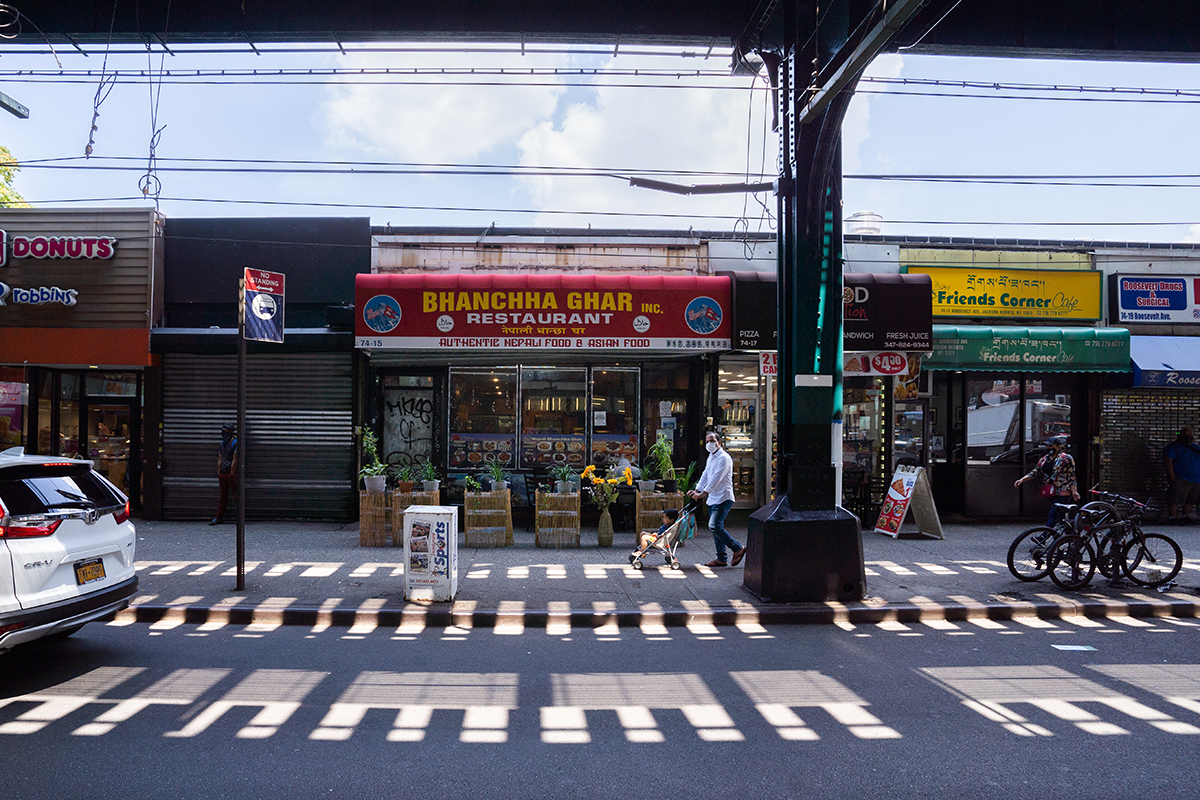
In Practice Notes, you’ll hear from Local Center teams and our own staff about what we’re learning as we support community-led design projects across New York City.
By Martha Snow
We just announced our latest cohort of Local Center partners, and I’m thrilled we get to support three additional neighborhood leaders with awesome design teams and resources this year.
Through the Local Center, we support local leaders across the city to tackle public space challenges in their neighborhoods – from cultural representation to climate preparedness and beyond. Our partners work with their neighbors to envision and actualize a public realm that reflects the special character of our neighborhoods and the diversity of the residents that live there today. Our partners find creative ways for their streets, parks, and plazas to become spaces for gathering, help build community wealth, and more.
Caring for the public realm is already incredibly complex, but managing commercial corridors is about as challenging as it gets. Retail may blanket Manhattan, but outside the core, our commercial corridors are the beating hearts of our neighborhoods, where commerce, creativity, and culture collide. Our main streets have the potential to bring neighborhoods together in a way that reflects and serves the people that live there.
So why is it so hard to manage commercial corridors? Part of the challenge is complicated jurisdiction. The streets, plazas and sidewalks that make up commercial corridors are managed by a series of government agencies, including DOT, SBS, DEP, and Parks, among others. The use and shape of our storefronts is governed by zoning, building and health regulations from even more government agencies. No one agency holds the strategy for what our commercial corridors can and should be. While the Department of Small Business Services has a range of resources and grant programs available to BIDs and merchant associations, no one agency defines the strategy for investment and stewardship at the heart of our neighborhoods.
So what do we do about stewardship? One option is Business Improvement Districts – entities in nearly 80 neighborhoods that fund maintenance and improvements in commercial districts. They are resourced by a combination of City resources, along with assessments of local property owners. That means that they range wildly in budget and impact. Some support a couple of blocks, and others whole neighborhoods.
Most often, BIDs are small organizations providing limited and essential services – from trash collection to event management – to create thriving streets. In the past few years, larger BIDs in wealthier neighborhoods have also been able to invest in their public spaces. BIDs like Union Square and the Meatpacking District have released vision plans that are now serving as tools to advocate for capital investment, private funding, and more to transform the public realm.
If we kept operating this way, New York City would run the risk of allowing certain neighborhoods to see major improvements, while most of the city would remain the same. BIDs in low- to moderate income neighborhoods have limited resources – they’re often just a couple staff members without additional capacity to plan and advocate for the future of their public spaces. Without additional support for these leaders, we will deepen the inequities we already see across our city.
We’re in a moment full of potential. As articulated in the “New” New York Plan, our government agencies are invested in exploring new ways to help commercial corridors thrive. We’re grateful to be working directly with the Department of Small Business Services, Department of Transportation, and the Office of the Deputy Mayor of Economic and Workforce Development to pilot a new approach to supporting small BIDs with design teams, capacity building, and implementation funding to create public space activations and vision plans this year.
We know that BIDs aren’t the only answer. They only blanket a fraction of the city, and there are so many neighborhoods with no support whatsoever. We’re grateful to work with the Association for Neighborhood and Housing Development, who bring experience with merchant organizing to help us consider what else might be possible. Beyond our work with BIDs this year, we are exploring how we can support other kinds of neighborhood organizations that could become powerful stewards for our main streets elsewhere. And we’re conscious that, without careful attention and broad investment in the public realm citywide, one-off revitalization projects can lead to displacement. We’re committed to working with neighborhood leaders who are working diligently to serve the businesses and residents that are already in their communities.
I’m curious to see what the vision planning process this year will yield. What will commercial corridors in Brownsville, Sunnyside, and the Bronx Capitol District feel like when their public spaces are supercharged with their neighbors’ desires for the future?
Martha Snow is the Director of Community Design at Urban Design Forum.